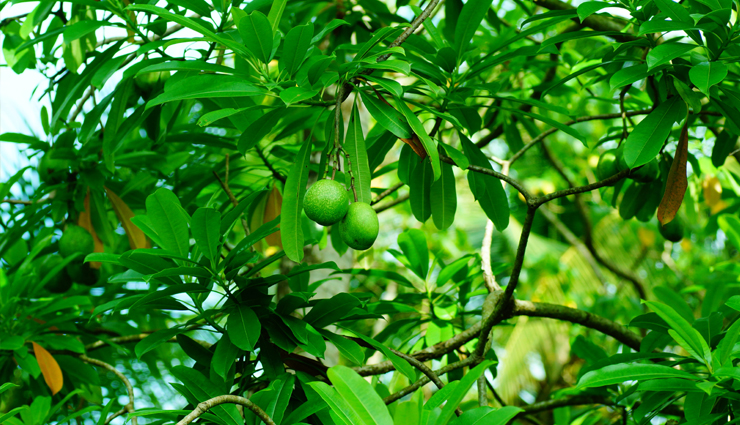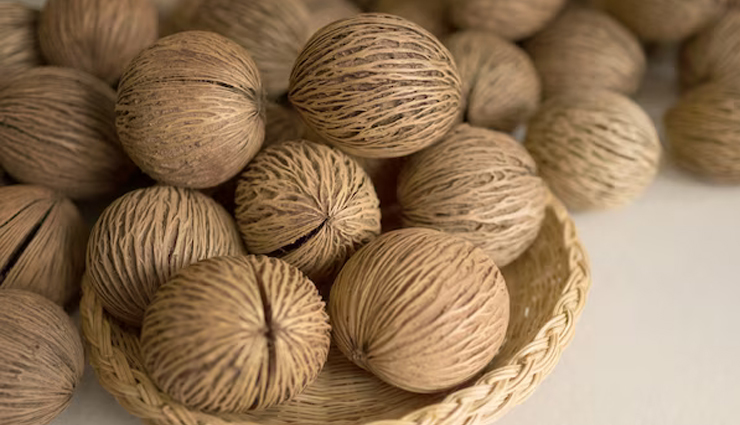Nature has blessed us with such important treasures in the form of trees and plants without which it is impossible to think of life. It is because of trees and plants that we breathe freely today. While trees and plants are considered a boon for humans, Ayurveda considers these trees and plants medicinal. Their roots, flowers, leaves, and bark are used in making many medicines. We humans cannot praise trees and plants enough, but today we will tell you about a unique tree which instead of giving life to humans, becomes a threat to their lives. This tree named Cerbera Odollam looks very beautiful, but you have no idea how deadly it is. This tree is as dangerous as it is beautiful. It is said that this tree is more dangerous than the poison of King Cobra. Cerbera odollam is also named as Suicide Tree. Wherever this tree is found, security is increased so that people do not get harmed by it.

Cerbera odollam is a tree species in the Apocynaceae family commonly known as suicide tree, pong-pong, mineola, otham, and chiute (CHmoro). It has a fruit known as Atlanta, which produces a powerful poison that is used for suicide and murder.
Much research has been done on this plant. According to researchers, Cerbera odollam is more poisonous than other poisonous plants in the world. The seeds of this plant contain an element called cerberin which is toxic.
Where it grows
It is native to South and Southeast Asia and Queensland, Australia, growing preferably in coastal salt marshes and swampy areas, but is also grown as a hedge plant between domestic compounds.
Common Names
Cerbera odollam is known by many local names depending on the region. These include othalam in the Malayalam language used in Kerala, India; kattu in the adjacent state of Tamil Nadu; dabar in Bengali; Santana, kisopo, Samanta or tangena in Madagascar, and pong-pong, buta-buta, bintaro or nyan in Southeast Asia.
Cerbera odollam closely resembles oleander, another highly poisonous plant from the same family. Its branches are whorled around the stem, and its leaves are terminally crowded, with slender bases, pointed apexes, and entire edges. The entire plant produces a milky, white latex.
Its fruit, when still green, resembles a small mango, with a green fibrous shell that encloses an oval kernel measuring about 2 cm × 1.5 cm and consisting of two cross-matched white fleshy halves. When exposed to air, the white kernel turns purple, then dark brown, and eventually gray or black. The fruit of this tree weighs between 200 and 250 grams and has a white flower.
Poisonous/Toxicity
The kernels of C. odollam contain cerberin, a digoxin-type cardenolide and cardiac glycoside toxin that blocks calcium ion channels in heart muscle, disrupting the heartbeat, often fatal. The most common symptom of poisoning in humans is vomiting. Electrocardiographic abnormalities were found to be common, with the most common being sinus bradycardia. About half of the patients develop thrombocytopenia. Apart from other supportive measures, temporary cardiac pacing has been used in management.
Eating it causes heart attacks/It is used in making medicines
Agricultural scientists say that this tree is kept very carefully because its seeds contain an element called sarberin which is poisonous. If a person eats this fruit, he may die of a heart attack. Apart from this, it also has a bad effect on the liver and kidneys. However, medicinal properties are also found in its fruit. Even though its fruit seeds are poisonous, many medicinal properties are also found in them. Antibacterial medicines are made by using them in a limited quantity. Apart from this, it is used in antifungal, antivirus, antibiotics, and antitoxin medicines.

Difficulty in detecting berberine
The ability of strong spices to hide their taste during autopsy makes them an agent of murder and suicide in India; there were more than 500 cases of fatal Cerbera poisoning between 1989 and 1999 in the southern Indian state of Kerala.
A lethal dose of the poison is contained in one kernel, causing death within 1-2 days.
General symptoms
—Burning sensation in the mouth
—Severe vomiting
—Irregular breathing
—Headache
—Irregular heartbeat
—Coma and eventually death
Known as suicide tree in India
A small amount of it can cause problems like a burning sensation in the body, headache, vomiting, irregular heartbeat, and diarrhea. Its use causes the death of a person within a few hours. It is also said about Cerbera odollam that it is very difficult to find its trace. It is known as a suicide tree in India.
(PC: Lifeberrys)










